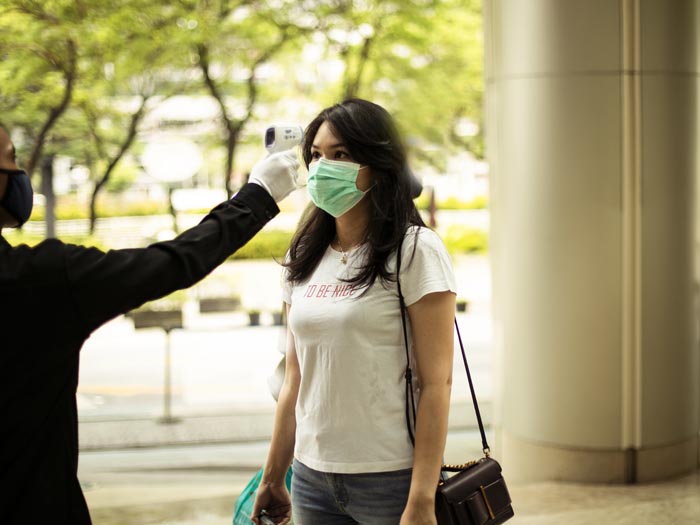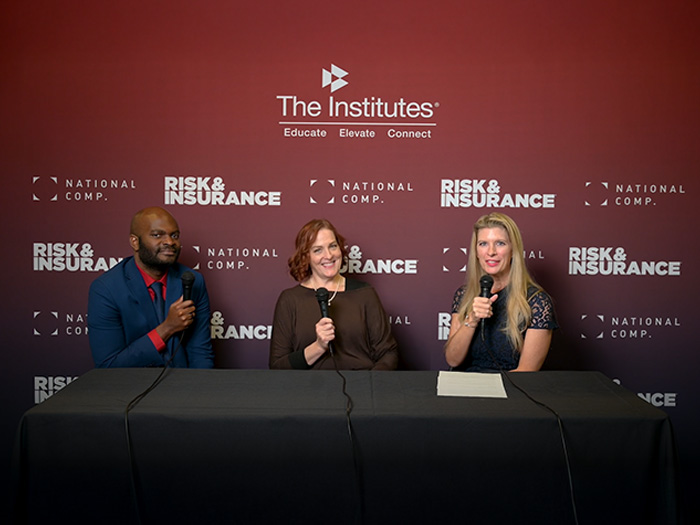5 Tech-Enabled Processes to Get Us Back to Work Safely After COVID-19

As businesses reopen their doors and bring employees back to the workplace, they’re facing challenges that were unimaginable just a few months ago.
Due to the contagious nature of COVID-19, many employers must now juggle hygiene and mask policies along with things like social distancing, contact tracing and testing.
Federal organizations have already issued guidelines to help employers reduce risk and keep employees and customers safe.
Many states have also issued their own rules. For instance, “interim guidance” from the New York Health Department requires employers have a written safety plan, stagger shifts, increase ventilation with outside air and have a system for tracing close contacts with anyone suspected to have COVID-19.
While it’s a challenging environment, technology can help support distancing, prevention and detection.
Many big companies have gone the extra mile in using technology to identify symptoms, engage in contact tracing and mitigate the risks.
Amazon has installed turnstiles at the entrance of many of its warehouse that check employees’ temperatures with thermal cameras, according to the New York Times. Masks are then handed out to each worker before they enter a testing center, where they scan their company badge and are issued a test.
While big companies have budgets and expertise for big applications, there are many simple software solutions, wearable devices and apps that can help employers reduce the spread and protect their employees.
“There are a number of technologies that can help employers bring back workers safely or mitigate COVID-related risk. Many of these are already on the market and deployed,” said Emily Whitcomb, director of the Work to Zero Initiative at the National Safety Council.
Here’s a breakdown of the different types of technologies being used to help limit the spread of COVID-19 in the workplace.
1) Social Distance Tracking
Wearables, mobile devices and other sensors can help employers support social distancing. These technologies typically use location and proximity sensing to determine when a worker may be too close to another.

StrongArm Fuse Platform
Safety science company StrongArm Tech has enhanced its FUSE Risk Management Platform in response to COVID-19 with a lightweight sensor that includes physical distancing alerts and customizable reports for management.
The StrongArm Fuse Platform is a wearable device that flashes and vibrates when it detects another sensor within 6 feet. In deployed applications, the solution has already decreased total worker exposure by 82%, according to StrongArm Founder and CEO Sean Petterson.
Professional services firm PwC has also developed a Check-In solution that uses Bluetooth and WiFi signals from employees’ smartphones to detect how close they get to each other. When an employee tests positive, they can then contact human resources and identify other people they have been in touch with in recent weeks.
2) Symptom Checking
While digital questionnaires aren’t the end-all to detecting COVID-19, they can reduce some of the risk. Many companies are deploying simple screening apps on mobile devices, tablets or other peripherals to quickly question employees before the start of a shift.
In mid-May, Microsoft and United Health launched an app to help employers screen workers for the virus and to develop testing guidelines.
ProtectWell offers a daily symptom screener that runs users through a series of questions and either clears them to return to work or directs them to be tested. The app gives the employee their own results and notifies the employers when they test positive.
3) Thermal Imaging and Temperature Checks
Many states and counties now require employers to conduct temperature measurements of employees entering their facilities.
While some are doing it manually with traditional thermometers, new telethermographic systems now enable users to take temperatures in a contactless manner. These devices measure the skin temperature from a distance, then use a complex algorithm to determine underlying body temperature.
The FDA recently issued the Enforcement Policy for Telethermographic Systems During the Coronavirus Disease 2019 (COVID-19) Public Health Emergency guidance to help expand the availability of the technology.
“They’re pretty easy to set up and calibrate,” said Paulette Lantuh, environmental, health and safety (EHS) manager at Kodak Alaris. “Taking the temperatures of employees all day isn’t something most people want to do, and it enables us to do it from a safe distance.”
4) Software and Apps
EHS software can also help employers track systems, conduct assessments and communicate with employees. In addition, many companies are developing their own internal applications for screening and tracing.

Emily Whitcomb, director, Work to Zero Initiative, National Safety Council
Kodak Alaris’ IT department developed an interface for employees to self-screen on their mobile devices before coming to work. The brief questionnaire checks for symptoms and concludes with a red or green screen to allow or deny entry to the facility. Employees can show their devices without having to break a six foot perimeter.
“We know that every person entering a facility everyday has been screened, and if we need to produce a log, it’s there. It’s an honor system and not perfect, but it eliminates us having to collect a lot of paper,” Lantuh said.
Companies are using software solutions to monitor and inform third-party contractors of COVID-19 policies, said Brian Callahan, president and COO at ISN Software Corporation.
When combined with strict check in-checkout scanning tools on jobsites, employers can have a clear record of all interactions.
“If an employee tests positive, accessing a list of employees and other individuals on that site at that time could allow for immediate contact tracking and quarantining,” Callahan said.
5) Disinfecting Robots
Several robotics manufacturers are bringing new machines to market that can sanitize and disinfect workplaces by spraying disinfectants or emitting ultraviolet rates to clean walls and surfaces. These robots are currently being used in airports, hospitals, grocery stores, warehouses and even offices.
“Autonomous solutions can reduce the time it takes to disinfect large spaces, keeping employees safe and reducing shutdown time for cleaning,” said Barry Phillips, chief marketing officer for Fetch Robotics.
In collaboration with Build with Robots, Fetch has developed Breezy One, a small cleaning robot that can decontaminate spaces over 100,000 square feet in only 1.5 hours. The robot’s government-developed and -tested disinfectant kills 99.99% of viruses and bacteria.
While many of these technologies can offer many benefits, they are not a “silver bullet” to mitigate the risks of COVID, Callahan added. Organizations much ensure that whatever technologies they adopt, they are easy to use by employees and are used consistently.
Employers must also consider their industry, processes, type of work and how individuals interact with each other. The National Safety Council’s SAFER Task Force offers a framework of resources with playbooks and other guidance on how these technologies can be used.
“Not all of these can entirely mitigate the risks because of the number of unknowns that remain with this type of coronavirus,” Callahan said. &










